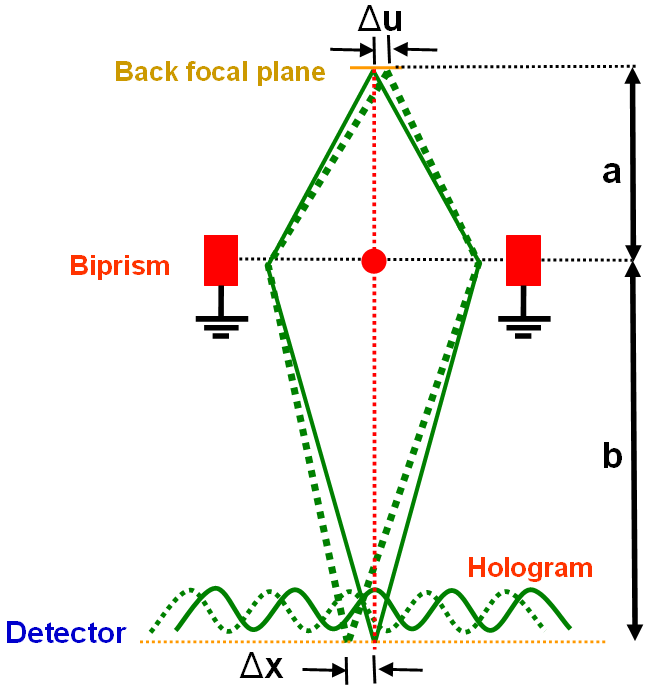=================================================================================
The spatial coherence is given by the size of the source.
FEG-TEMs with field-emission electron sources [2 - 3] offering much better spatial and temporal coherence than those offered by CTEMs with LaB6 and W (tungsten) electron guns. Therefore, FEG-TEMs have allowed images to contain much higher spatial frequencies [4 - 5].
With the introduction of a Cs-corrector [1], the dependence of spatial coherence on beam convergence reduces significantly and may even be eliminated completely at Cs = zero. In that case, the point resolution is equal to the information limit.
A field emission gun (FEG) is needed for electron holography since the spatial coherence with a conventional electron gun extremely limits the resolution. Note that even though for a TEM with a conventional electron gun, a smaller illumination aperture can be used to increase the degree of coherence, the smaller aperture still cannot practically be used for holography measurement because of the smaller coherent beam current Icoh.
Figure 4153 shows the schematic illustration of the effect of limited spatial coherence on the off-axis electron holograms. The electrons, emitted from two different locations in distance Δu in the back focal plane, form two inference patterns with a lateral shift of Δx. Both interference patterns superimpose incoherently, resulting in a reduced interference fringe contrast [6].

| Figure 4153. Schematic illustration of the effect of limited spatial coherence on the off-axis electron holograms.
Here, u is the spatial frequency, while x has units of length. |
Table 4153. Types of coherencies in EM (electron microscope) measurements.
Types of coherencies |
Mechanisms |
| Temporal Coherency |
All
the electrons have the same wavelength, just like monochromatic light. |
| Spatial Coherency |
Spatial coherency is related to the size of the electron source. Perfect
spatial coherence would imply that the electrons were all
emanating from the same point at the source. Therefore, source size
governs spatial coherence and smaller source size gives better
coherency. |
[1] H. Rose, Outline of a spherically corrected semiaplanatic medium-voltage transmission electron microscope, Optik, 85 (1990) 19–24.
[2] M.T. Otten, W.M.J. Coene, Ultramicroscopy 48 (1–2)
(1993) 77–91.
[3] T. Honda, T. Tomita, T. Kaneyama, Y. Ishida, Ultramicroscopy
54 (2–4) (1994) 132–144.
[4] W. Coene, G. Janssen, M. Op de Beeck, D. van Dyck,
Phys. Rev. Lett. 69 (1992) 3743–3747.
[5] M. Op de Beeck, D. van Dyck, W. Coene, Ultramicroscopy
64 (1–4) (1996) 167–183.
[6] Michael Lehmann and Hannes Lichte, Tutorial on Off-Axis Electron Holography, Microsc. Microanal. 8, 447–466, 2002.
|